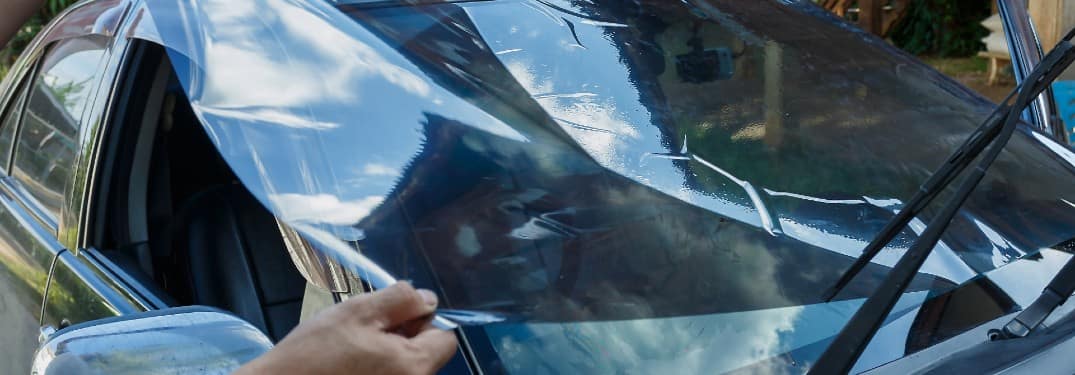How Dark Should My Windshield Be?
At Xclusive Wraps and Tint, we understand that deciding on the appropriate level of tint for your windshield can be a daunting task. There are various factors to consider, from legal regulations to personal preferences. In this article, we will provide you with the essential information you need to determine how dark your windshield should be.
Legal Regulations for Windshield Tint
When it comes to tinting your windshield, it is crucial to comply with the legal regulations in your state. Each state has specific laws regarding the maximum allowable visible light transmission (VLT) percentage for windshield tint. The VLT percentage refers to the amount of visible light that can pass through the tint film. Exceeding the legal limit can result in fines and penalties.
Understanding Visible Light Transmission (VLT) Percentage
The VLT percentage indicates the amount of light that can pass through the tinted window. For example, a 70% VLT means that 70% of visible light can penetrate the window, while the remaining 30% is blocked by the tint. The lower the VLT percentage, the darker the tint, and the less light can pass through.

This image is property of i.ytimg.com.
Factors to Consider When Choosing Windshield Tint Darkness
In addition to legal regulations, several other factors should influence your decision on how dark you want your windshield tint to be. Consider the following:
Climate Conditions
Your local climate can influence the level of tint darkness you choose. If you live in a hot and sunny area, you may want a darker tint to reduce glare and heat inside your vehicle. In contrast, if you reside in a colder region, you might prefer a lighter tint to maintain visibility during overcast days.
Driving Habits
Your driving habits and daily commute should also be taken into account when selecting the darkness of your windshield tint. If you frequently drive long distances or during peak sunlight hours, a darker tint might provide you with more comfort and protection against UV rays.
Aesthetic Preferences
Your personal style and aesthetic preferences play a significant role in determining how dark you want your windshield tint to be. Some individuals prefer a subtle tint that enhances their vehicle’s appearance, while others opt for a darker tint for a more dramatic effect.

This image is property of i.redd.it.
Benefits of Tinting Your Windshield
Tinting your windshield offers numerous benefits beyond enhancing the aesthetics of your vehicle. Here are some advantages of tinting your windshield:
UV Protection
Windshield tint helps block harmful UV rays from entering your vehicle, protecting your skin and eyes from sun damage. Additionally, UV protection can prevent your car’s interior from fading and deteriorating over time.
Heat Rejection
A darker windshield tint can significantly reduce the amount of heat that enters your vehicle, keeping the interior cool and comfortable, especially during hot summer months.
Glare Reduction
Tinted windshields can minimize glare from the sun and other vehicles’ headlights, improving visibility and driving safety, particularly during sunrise and sunset.

This image is property of hips.hearstapps.com.
Types of Windshield Tint
When it comes to tinting your windshield, you have several options to choose from. Here are some common types of windshield tint:
Dyed Window Film
Dyed window film is one of the most popular and affordable options for tinting windshields. This type of tint contains a layer of dye that absorbs heat and reduces glare. However, dyed window film tends to fade over time and may not provide as much heat rejection as other types of tint.
Ceramic Window Film
Ceramic window film is a premium option known for its superior heat rejection and UV protection. This type of tint consists of ceramic particles that block out heat while allowing visible light to pass through. Although more expensive than dyed film, ceramic window tint is durable, long-lasting, and provides excellent clarity.
Carbon Window Film
Carbon window film is a high-quality tint that offers enhanced heat rejection and a sleek appearance. This type of tint contains carbon particles that absorb heat and block UV rays, providing superior protection for your vehicle’s interior.

This image is property of cdn.shopifycdn.net.
Choosing the Right Windshield Tint Darkness
After considering legal regulations, climate conditions, driving habits, and aesthetic preferences, it’s time to decide on the right darkness level for your windshield tint. Here are some general guidelines to help you make an informed choice:
Light Tint (70-90% VLT)
- Ideal for individuals seeking subtle UV protection and minimal heat rejection.
- Offers a light tint that enhances your vehicle’s appearance without compromising visibility.
Medium Tint (40-70% VLT)
- Provides moderate UV protection, heat rejection, and glare reduction.
- Strikes a balance between aesthetics and functionality, suitable for most driving conditions.
Dark Tint (5-40% VLT)
- Offers maximum UV protection, heat rejection, and glare reduction.
- Ideal for hot and sunny climates, long commutes, and drivers looking for enhanced privacy.

This image is property of di-uploads-pod2.dealerinspire.com.
Conclusion
In conclusion, the darkness of your windshield tint should be chosen based on legal regulations, climate conditions, driving habits, and personal preferences. Prioritize safety, visibility, and comfort when selecting the appropriate level of tint darkness for your vehicle. At Xclusive Wraps and Tint, we are here to assist you in making the best choice for your luxury vehicle. Visit us today for expert advice and top-quality tinting services that will enhance and protect your vehicle for years to come.



